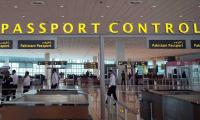The Panama case is a legal measure par excellence. The apex court has heard the case against the chief executive of Pakistan and reserved its decision. The court had previously referred the matter to a JIT for investigation into allegations of corruption; the JIT was put together comprising state functionaries from civil and military wings. The investigative journalism at the global level that produced the Panama leaks pushed the whole issue in the direction of a legal pursuit.
The first phase of the legal battle ended up with the Supreme Court’s split decision that shied away from pushing the prime minister out of his position, and initiated further investigations. The second phase led to the JIT investigations. This phase, unlike the first phase, turned out to be very controversial in terms of its composition, its conduct during investigations and its final product in the form of its 10-volume report. The third phase has almost concluded. The Supreme Court declared that it was not bound by the JIT report. It seemed to be saying that it had an open mind and – by implication – the defendant had the right to criticise the report.
There is already talk about the fourth phase whereby the case can be referred to NAB, whatever the outcome of the current Supreme Court hearings maybe – disqualification of the prime minister or otherwise. Meanwhile, the apex lawyer’s forum, the Pakistan Bar Council, has been asking for the prime minister’s resignation after the JIT report which, in its view, has already declared him guilty. This is apparently against the view of the Supreme Court, which started its hearings after the submission of the JIT report.
The legal fraternity is divided down the middle on the issue of opting for public demonstrations in pursuit of its demand for the prime minister’s resignation, in the absence of a strong legal reason to back it up. While the case is still sub-judice, the legal community will be bogged down by controversy surrounding the timing and specific legal grounds for its actions. The case is far from conclusive.
At the other end, the pivot of the relevant constitutional debate, Article 62 (1)-F, demands the person under litigation to be ‘sadiq and ameen’. In his recent press conference, Javed Hashmi claimed that Ziaul Haq had this clause inserted in the constitution essentially to use it as a stick against politicians. The subsequent TV discussions about the relevant clause introduced a fierce debate about throwing it out or keeping it as part of the fundamental law of Pakistan.
It will be interesting to see how the Supreme Court deals with the requirement of a certain level of moral behaviour from politicians, from which judges, generals and bureaucrats are exempted. Will the court make the controversial clauses of Articles 62 and 63 arbitrary inserted by Zia in the 8th Amendment justiciable? Whereby it can open the floodgates of the use of these legal provisions against politicians. Will Pakistan enter a higher level of vendetta among rival contenders of power with the use of this clause?
A similarly confusing approach to the legal case underscored the process of questioning in the court. It related to the issue of whether the burden of proof lies with the prosecutor, as is usually the case, or with the defendant as per the thinking of the bench that was reported in the media. A related question is whether the media is indeed sensitive to the legal and constitutional issues involved or whether it is overly tilted in favour of the political dimension that seems to be the case.
Indeed, politics has engulfed the legal case of the Panama leaks. The demand for PM Nawaz Sharif’s resignation predates the Panama case. Imran Khan’s relentless effort to unseat him on various issues, led by electoral malpractices during his sit-in in 2014 came to naught when the PTI’s street action had the adverse effect of uniting the parliamentary parties. However, the recourse to the judiciary on the issue of corruption changed the game. As a triadic third in a dyadic conflict, along with its prestige and authority from Iftikhar Chaudhry’s days, the Supreme Court could bring about a qualitative change in judicature in this country.
But, the court proceedings were overwhelmed by the media coverage that politicised the issue at a massive scale. The daily circus of hostile comments emerging from the two camps took the matter to the people who started to make up their minds in favour of one side or the other. Still, there are no visible signs of a change in the voting pattern, which was the prime mover for the whole legal case.
What is happening out there? The political opposition against Nawaz Sharif is not united the way the non-PTI parties were in 2014. The core protagonists continue to be the PTI and JI. The MQM is skirting around the issue. The ANP remains distant. And smaller parties in Balochistan are looking at the power play on top of the federation with disbelief and a cultivated silence.
The PPP’s move against the PML-N government could have shifted the scales. But the party seems to give the impression of a weak position. It has accepted its irrelevance in the current issue and resigned to issuing occasional innuendos. The PTI is occasionally hard-hitting against Zardari for corruption; and the PPP is obliged to look the other way in embarrassment.
If there are no committed pro-PTI elements in and around parliament who would like to go the whole hog on the current issue, there is also no impressive line-up of support on the Nawaz side. Apart from the feeble voices of the JUI-F and PkMAP leaders, no widespread support from parliament has been forthcoming for the prime minister.
The court case has been tied up with the crucial power game of winning or losing elections for the national and provincial assemblies, the March elections for the Senate, the electoral reforms that seem to be ready for legislation, and possible demarcation of electoral constituencies on the basis of the new census whose results are yet to be announced.
Meanwhile, for this grand political agenda, there is actually no political movement out in the street from either side, nor even the lawyer’s movement that looks to be amateur and ill-timed. The fight is in the media, not on the street. Also, the fight has boiled down to two political actors in the final sense – the way it started, the PTI at one end and the PML-N at the other.
The PML-N has been able to keep its vote bank against all odds. But a negative verdict can massively affect its line-up of electoral heavyweights, its support among voters and its moral standing in general. The Supreme Court is seized with a heavy responsibility of keeping its institutional and professional standing high. Dispute settling is no easy exercise, especially if it relates to a different field of activity – in this case a fight-out for a parliamentary victory.
Law and politics have become inextricably intertwined. The court faces the challenge of extricating itself from what can be a political and constitutional quagmire that can lead to political instability. It will be sad if there are any adverse effects beyond the imagination of the court.
The writer is a professor at LUMS.
To take part in revolution, farmers need resources to afford seed varieties, fertilisers, and cost of setting up tube...
Pakistan remains burdened by insufficient financial support, saddled with conditions that deepen dependency
Government implements key policy decisions aimed at stabilising the economy
This is not going to be feel-good, year-end piece where I will use motivational quotes to tell how resilient we are
State Bank overlook considerable challenges surrounding Pakistan's economy
Pakistan remains mired in what can only be described as a ‘Baby Boomer Syndrome’







